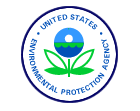
|
U.S. EPA Superfund Innovative Technology
Evaluation (SITE) Program
Carver-Greenfield ProcessŪ
for Solvent Extraction of Wet, Oily Wastes
Dehyro-Tech Corporation
This document is available in the Adobe Acrobat PDF
Format.
Click here for information
about Portable Document File (PDF) Formats.
or
Click here
to directly download the Acrobat Reader.
(To view the PDF, it is recommended that you
use the latest version of Acrobat Reader.)
U.S. EPA Superfund Innovative Technology Evaluation
(SITE) Program Carver-Greenfield ProcessŪ for Solvent Extraction of Wet, Oily
Wastes Dehyro-Tech Corporation (651KB)
ABSTRACT
Dehydro-Tech Corporation (DTC), East Hanover, New Jersey, has developed an
application of the Carver-Greenfield (C-G) ProcessŪ for petroleum sludges and
other wet, oily, industrial solid wastes. The C-G Process is unique because
it combines dehydration and solvent extraction. Dehydrating soils prior to extraction
is the key advantage: (1) solvent extraction is more efficient because water
is not present and cannot act as a barrier between the solvent and the pollutant
oil phase; (2) any emulsions initially present are broken and potential emulsion
formation is prevented; and (3) the dry solids product is stabilized more readily,
if required. The C-G Process represents a new approach in the treatment of soils,
petroleum K wastes, spent drilling muds, and other hazardous sludges containing
petroleum-based contaminants such as fuel oils, PCBs, and PAHs. Since 1961,
the process has been applied world-wide to municipal wastewater sludge, paper
mill sludge, rendering plant waste, pharmaceutical plant sludge, and other wastes.
The C-G Process operates by mixing the wet, contaminated solids with a hydrocarbon
solvent and then dehydrating the slurry mixture in a multi-effect evaporator
system. The slurry of dehydrated solids is processed in a multi-stage solvent
extraction unit. The solids are centrifuged away from the solvent and "desolventized,"
an operation that evaporates residual solvent. The final solids product typically
contains less than 2 percent water and less than 1 percent solvent. The spent
solvent, which contains the extracted indigenous oil, is distilled to separate
the solvent for reuse and the oil for recovery or disposal. The water product
is substantially free of solids, indigenous oil, and solvent. The C-G Process
was demonstrated in August 1991 at a U.S. EPA research facility in Edison, New
Jersey, using a 640-lb batch of drilling mud waste from the PAB Oil Superfund
site in Abbeville, Louisiana. The demonstration focused on the technology's
ability to (1) separate the drilling mud into its constituent solid, organic,
and water fractions; and (2) extract oil from the solids fraction. Assessing
the solids/oil/water separation efficiency was done by means of mass balances.
Extraction efficiency was based on the removal of indigenous oil, which derives
from the results of SOW, TPH, and solvent analytical procedures. Results show
that the process effectively separated the mud waste into its component phases,
with total mass recoveries of >96% for both test runs. Indigenous oil removal
was about 90%, with no detectable levels of indigenous TPH found on the solids
product from both test runs. The Applications Analysis Report contains other
test results, including information on SVOCs, VOCs, and metals leaching. A cost
of approximately $520/ton of wet feed was estimated for treating wastes similar
to that treated during the demonstration.
Posted March 30, 2000
|

